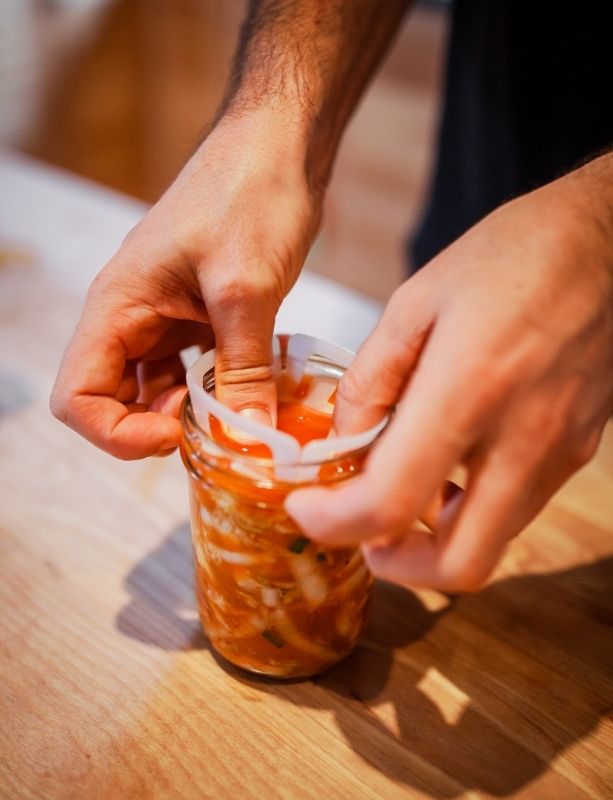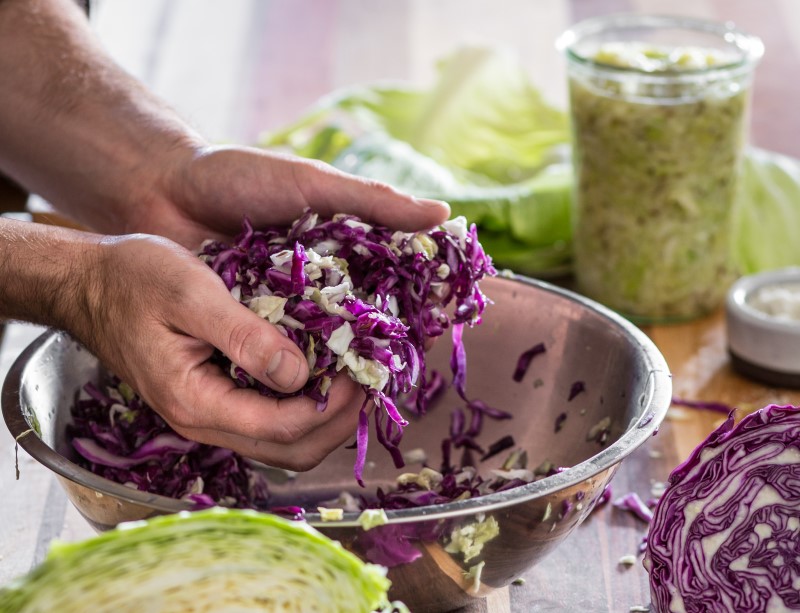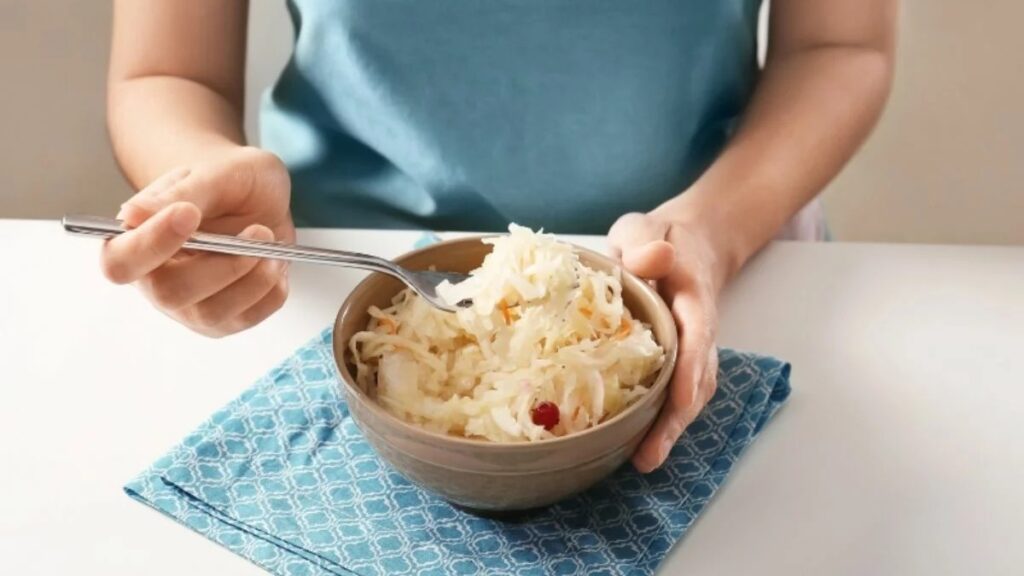Before you start fermenting vegetables (lacto-fermentation), find out which little mistakes you can easily avoid!
Lacto-fermentation is not rocket science. Anyone can make fermented sauerkraut, kimchi, and pickles in their kitchen.
To ensure the success of all your fermented vegetable recipes, here are 5 mistakes to avoid!
1. Not Weighing Your Vegetables
Salt plays an essential role in vegetable fermentation. If there is not enough salt, fermentation can go wrong and there is a risk of mould. On the other hand, if there is too much salt, it tastes bad.
However, every vegetable is different. The weight of the vegetables is used to determine how much salt to add. Therefore, for every fermented vegetable recipe, we recommend weighing the vegetables to determine how much salt is needed. You don’t want to go by eye!
Solution: Weigh your vegetables.
For more information, see How Much Salt to Add in Lacto-Fermentation and Salt and Brine: A Complete Guide.

2. Jarring Vegetables That Are Too Dry
When you put your vegetables in a jar, they must be submerged in liquid. This is what allows the fermentation to take place by preventing contact with air.
In recipes such as sauerkraut or kimchi, it is the salt that soaks the vegetables.
If the vegetables you are using are dry and do not create enough brine, simply add a little salted water to cover them properly (see Salt and Brine in Lacto-Fermentation: The Ultimate Guide).
When using brine, like for pickles, it’s really easy! Just add saltwater to cover the vegetables, and put a weight on them to keep them submerged.
Solution: In both cases, use a weight (glass weight, ViscoDisc, etc.) to prevent vegetables from being exposed to oxygen.
3. Opening the Jar During Fermentation
In lacto-fermentation, air is the enemy!
Although it is tempting, you should not open the jar during the fermentation of your vegetables.
If you do, you expose your vegetables to all sorts of moulds, yeast, and other microorganisms. Undesirable organisms could then develop on the surface of the vegetables.
The best thing to do is to leave the lid on and leave your jars alone.
When you open your jar, place it in the fridge for longer storage.
Solution: Only open the jar when you are ready to use it, then put it in the fridge.
4. Not Getting the Right Equipment
To avoid failure on your first attempt, make sure you have all the necessary equipment!
You can do it with what you have on hand, or you can buy specialized equipment. Whatever you use, you must have:
- A container to put the vegetables in
- A weight to keep the vegetables submerged
- A way to get rid of the gas that is created during fermentation
Solution: Get the right equipment!
You’ll see, it’s really easy to do at home! For more information, see Choosing Your Lacto-Fermentation Equipment.
5. Not Daring to Take the Plunge
The most common mistake is to be afraid to take the plunge!
Fermenting vegetables is easy, fast, safe, economical, and delicious. If you know how to make a salad, you already know half the recipe!
By following some simple fundamentals, you can turn plain vegetables into tasty, lively condiments packed with goodness.

Solution: Get started (and get trained if necessary)!
If you’re not sure where to start, check out our Guide to Fermenting Vegetables or try our 3 foolproof recipes.

